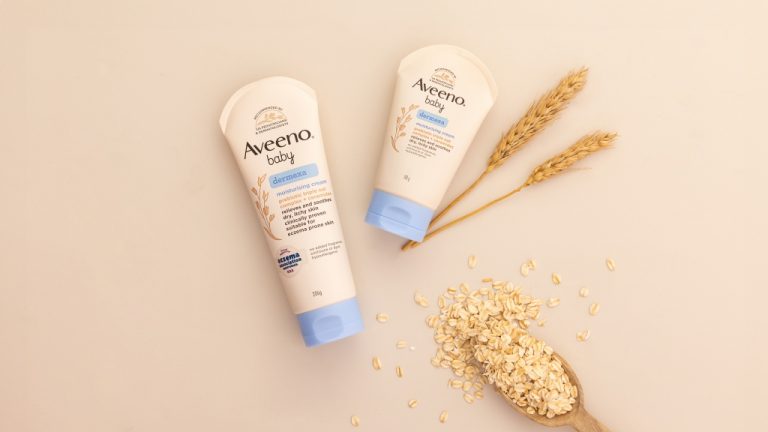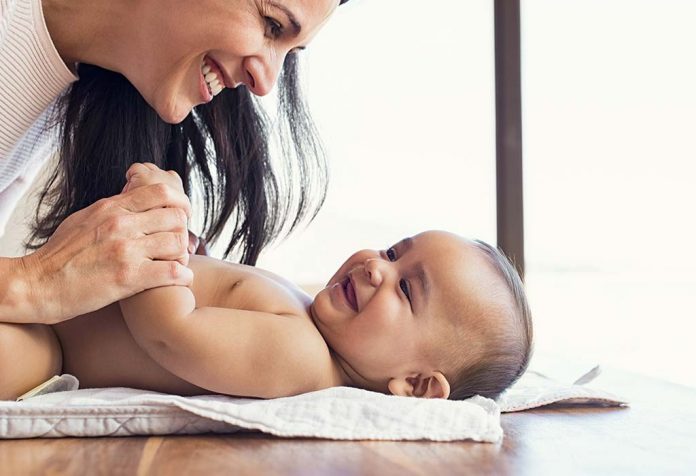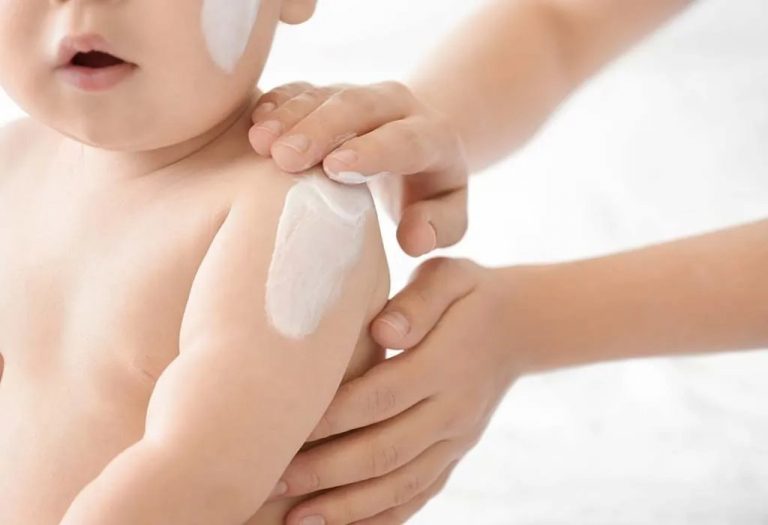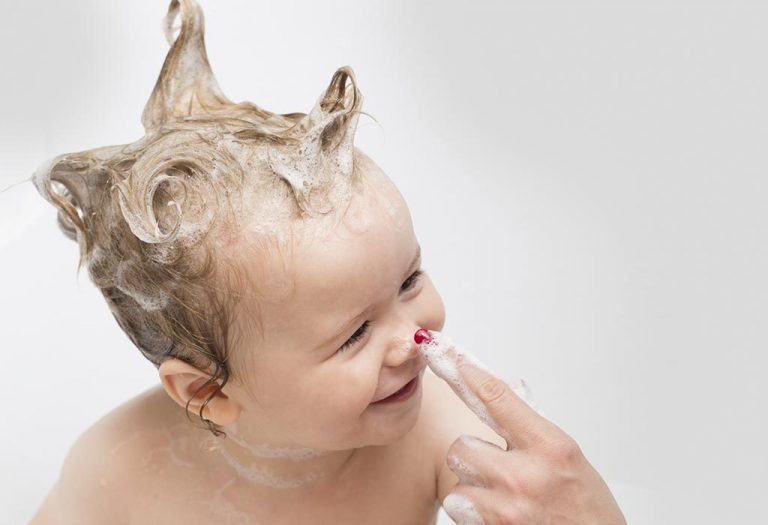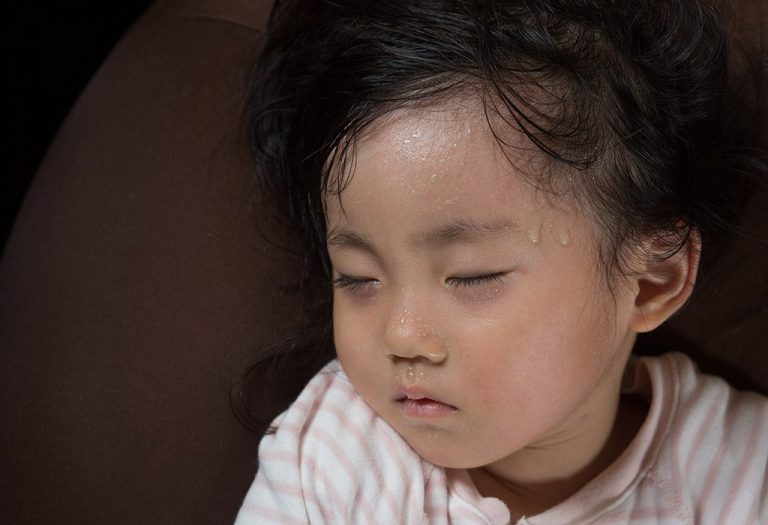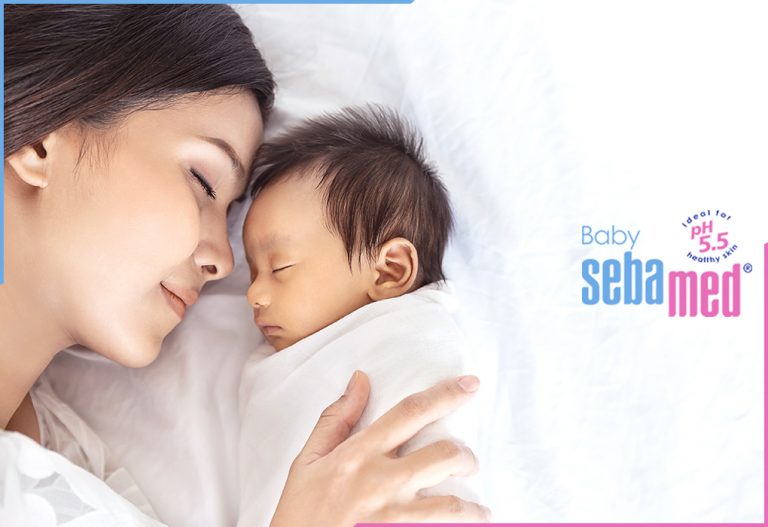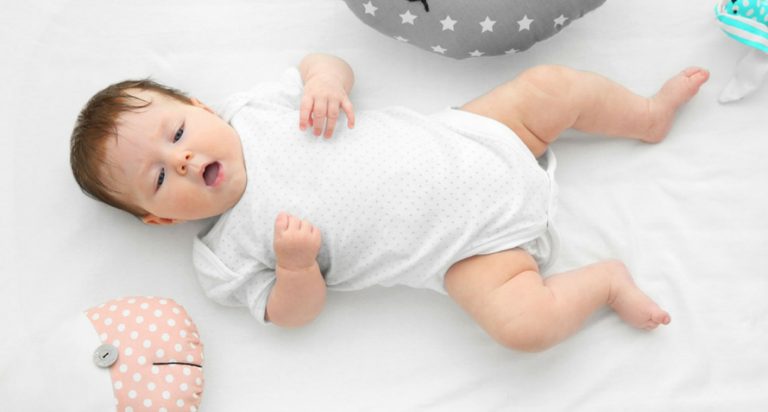Does Your Baby Have Atopic Dermatitis, or Is Their Skin Just Sensitive? Skincare Solutions That Will Help!
Your baby’s skin is not accustomed to the world outside just yet. Surrounded by moisture in the womb earlier, they are now exposed to external environmental factors and also oscillating temperatures. This is normal for all babies. But if you notice your little sunshine troubled with frequent itching, more than usual red patches, and inflamed skin, your baby could have more than just sensitive skin; it could also be atopic dermatitis. A baby’s skin is 30% thinner than adult skin, making it more sensitive; however, some sensitive skin symptoms may flare up more than normal (1). Understanding your baby’s skin with the help of this article can help you figure out the best ways to care for their skin, whether it be atopic dermatitis or sensitive skin.
Let us first learn to differentiate between the two.
Atopic Dermatitis Vs Sensitive Skin: Key Differences
Sensitive skin is more like a characteristic in which the skin reacts to an external stimulus, like environmental factors, more often than others without sensitive skin, rather than a medical condition (2). Once you eliminate the triggers and take extra care, the sensitivity diminishes. Baby skin is almost always sensitive (3). The Aveeno Baby Soothing Relief Moisture Cream can help lock in moisture and keep your baby’s skin plump and healthy, and keep minor irritation at bay.
While both skin issues involve skin irritation, atopic dermatitis is more chronic, immune-related, and requires medical attention. Take a look at this table to understand the nature of both conditions.
| Atopic Dermatitis | Skin Sensitivity |
| Long-lasting and severe rashes | Immediate reaction after irritant contact and typically resolves once the irritant is removed |
| Intense itching, especially at night | Symptoms may recur due to external triggers |
| Genetic predisposition | Not genetic |
While theoretically it may be easy to understand the difference, when it comes to noticing a dry, red, flaky patch on your little one’s skin, it can be confusing. Let’s understand Atopic Dermatitis in more detail
What Is Atopic Dermatitis?
Atopic dermatitis is a long-term—chronic skin condition that causes the skin to become dry, itchy, and inflamed (4). It is the most common type of eczema in babies. This chronic inflammatory skin condition affects up to almost 20% of babies under the age of two in the United States and approximately 10 to 30% of children in developed countries (3) (5). A common condition in babies and children, it appears in the first 3 to 6 months of life (6).
What Causes Atopic Dermatitis in Babies and Children?
Although the exact cause of atopic dermatitis is unknown, here are some things linked to the condition.
- Immune System Reaction: Due to an immature immune system, the baby’s skin lacks specific proteins that protect the skin by maintaining the skin barrier (7). As a result, the skin gets inflamed and scaly.
- Genetics: Atopic dermatitis can be inherited from parents to their children. Babies with atopic dermatitis often show signs of seasonal allergies and asthma. A family history of hay fever, asthma, or eczema can lead the baby to develop similar skin conditions. Although people with this skin condition test positive for allergy skin tests, it is essential to remember that allergies do not cause it.
- External Factors: Extremes, like winter weather, hot water baths, harsh soaps, hot and dry temperatures, and allergens like pollen, dust, and pet dander, can be influential in irritating the skin barrier and causing it to flare up.
What Are the Symptoms of Atopic Dermatitis in Babies?
Symptoms of atopic dermatitis in babies often vary. Here are some commonly observed symptoms in babies, but they can occur differently in different children:
- Dry and scaly skin
- Redness and inflammation
- Intense itching
- Thickened or leather-like skin from long-term scratching and irritation
- Pale skin
- Rough bumps on arms, thighs, and face
- Darkened skin around the eyes and eyelids
- Blisters with crusting and oozing
What Causes Atopic Dermatitis or Eczema to Flare Up in Babies?
You may want to carefully steer away from or be mindful of these triggers as they could worsen the atopic dermatitis symptoms (5):
- Allergens, like pollen, dust mites, mould, or animals
- Dry wintry air
- Contact with harsh chemicals and irritants
- Contact with rough materials like wool
- Drying out skin after taking a bath
- Keeping your baby in extremely dry, hot or cool air
- Artificial dyes and perfumes in baby care products like lotion and shampoo
- Cold or flu
Skincare Solutions for Atopic Dermatitis
There is no cure for atopic dermatitis, so the best plan to deal with eczema or atopic dermatitis in babies is to reduce the skin inflammation and itching to prevent the damage as much as possible. Since it usually gets better or goes away on its own, you can try some solutions to help your child live with atopic dermatitis without much struggle.
1. Moisturise!
A good moisturiser not only creates a proactive layer of moisture but also helps repair/restore the skin barrier. Ingredients like natural colloidal oatmeal and ceramides are highly effective and recommended by paediatricians and dermatologists, as they restore the skin’s protective barrier and reduce water loss and skin itching. According to a 2014 study published in the Journal of Drugs in Dermatology, colloidal oatmeal is the only approved skin protectant ingredient by the Food and Drug Administration (FDA) for the management of eczematous skin and is recognised as safe and effective as an adjunct treatment for managing atopic dermatitis (AD) in many studies (8).
Make sure to use fragrance and dye-free, hypoallergenic moisturiser or cream right after bath while the skin is still damp to lock in moisture. Baby moisturisers like Aveeno Baby Dermexa Cream do a fantastic job of soothing eczema-prone skin. Colloidal oatmeal’s anti-inflammatory and moisturising properties ensure a healthy skin microbiome and provide relief from itching. It is pH-balanced, hypoallergenic, and free from baddies like parabens and phthalates, giving parents much-needed assurance that they are choosing the best for their babies.
Moisturisers should be applied at least twice or thrice a day to avoid drying out the skin. As with diapers, make sure that you moisturise the bottom zone well with every diaper change (9).
2. Bathing With Care
Infants’ skin with eczema must be dealt with extreme care. It is recommended to use fragrance-free, non-soap cleansers to bathe your little one. Also, limit their bath time to less than 15 minutes and use only lukewarm water. You may add oatmeal to soothe the irritation.
3. Do Topical Treatment
Ointment-based moisturiser, with paediatrician-approved ingredients that are gentle on the baby’s skin, should be used. Consult your paediatrician for topical treatments like hydrocortisone creams and use them with caution to manage flare-ups.
4. Limit the Exposure
Keep your baby away from irritants, such as dust mites, pet dander, mould, harsh detergents, fabric softeners, and extreme temperatures, as much as possible. Your cutie patootie’s surroundings should always be clean, cool, and comfortable (6). Remember, stress is a trigger, too.
5. Stay Away From Dietary Triggers
Certain foods, like eggs, nuts, wheat, and dairy, might trigger your baby’s eczema and must be excluded from their diet (specifically for 6+ babies on solids.) Give them a nutritious diet rich in Omega-3 fatty acids to help maintain their skin (10).
6. Purchase With Caution
When purchasing skincare products for your little one, check the labels for parabens, dyes, and synthetic chemicals, as these can trigger your baby’s eczema to flare up.
7. Clothes Matter
Itchy or rough fabrics, such as wool, can irritate the skin. Therefore, you should prefer soft cotton or natural fibre, except wool, clothing that comes close to your little wonder’s skin.
FAQs
1. How do I tell if my baby’s rashes are severe?
If your little one’s rash is spreading fast, oozing, swelling, or disturbing your baby’s sleep routine, seek medical advice without delay.
2. Is it possible to cure atopic dermatitis?
Atopic dermatitis is not curable, but it can be managed with the right treatment and care.
3. What should I avoid in baby’s skincare products?
Alcohol in wet wipes and dyes in baby lotions and soaps, and harsh chemicals in detergents, soaps, shampoos, and creams should be avoided.
An accurate diagnosis of your baby’s skin problem is essential so you can provide the proper skincare treatment on time. If home remedies don’t seem to improve things, it is best to consult your doctor. In the meantime, don’t skip out on mild cleansing or moisturising with baby-safe products, like Aveeno Baby Daily Moisture Lotion, which is delicately formulated to be gentle on the skin and reduce irritation and inflammation. Recommended by the U.S. paediatricians and dermatologists, Aveeno Baby is undoubtedly a safe choice for your little peanut.
Prioritise gentle, hypoallergenic products for your baby’s skin.
Also Read:
Baby Hives – Symptoms and Treatment
Rashes on Baby Face – Causes and Treatment
Baby Skin Care – Easy Tips for Baby’s Skin Care
Baby Skin Allergy : Reasons, Signs & Treatments
Was This Article Helpful?
Parenting is a huge responsibility, for you as a caregiver, but also for us as a parenting content platform. We understand that and take our responsibility of creating credible content seriously. FirstCry Parenting articles are written and published only after extensive research using factually sound references to deliver quality content that is accurate, validated by experts, and completely reliable. To understand how we go about creating content that is credible, read our editorial policy here.
1. Stamatas, G, et al. 2, s.l. :Pediatric Dermatology, 2010, Vol. 27, pp. 125-131
2. PubMed Central – Sensitive skin: review of an ascending concept
4. Children’s National – Pediatric Eczema (Atopic Dermatitis)
5. Cleveland Clinic – Baby Eczema
6. Stanford Medicine – Atopic Dermatitis in Children
7. Mount Sinai – Atopic dermaitis
9. Johns Hopkins Medicine – Managing Eczema in Winter and Year Round: A Parents Guide





